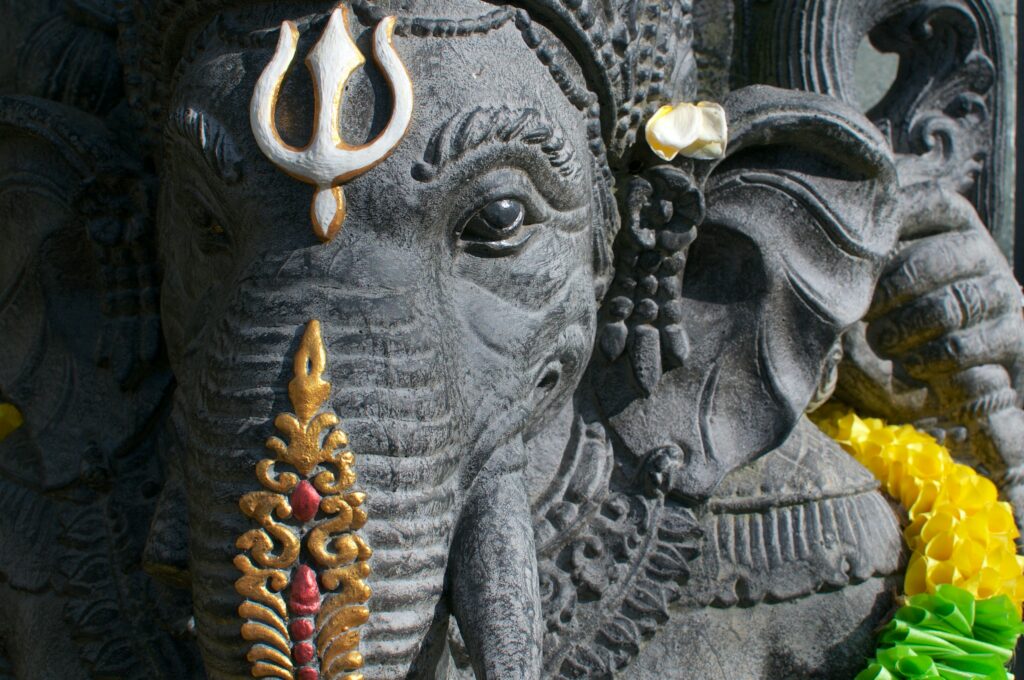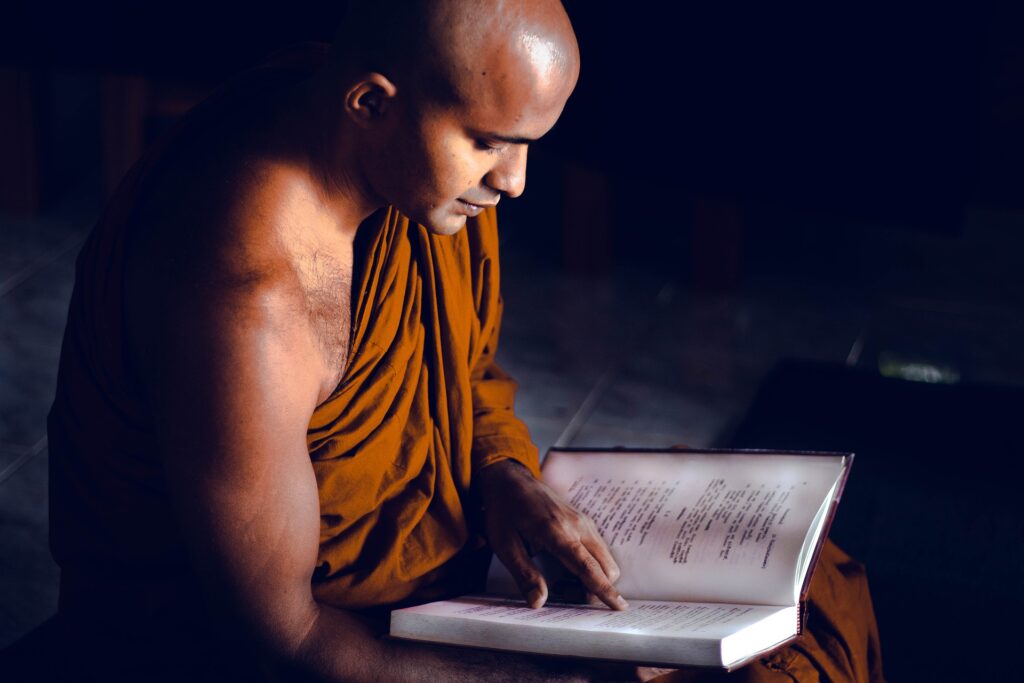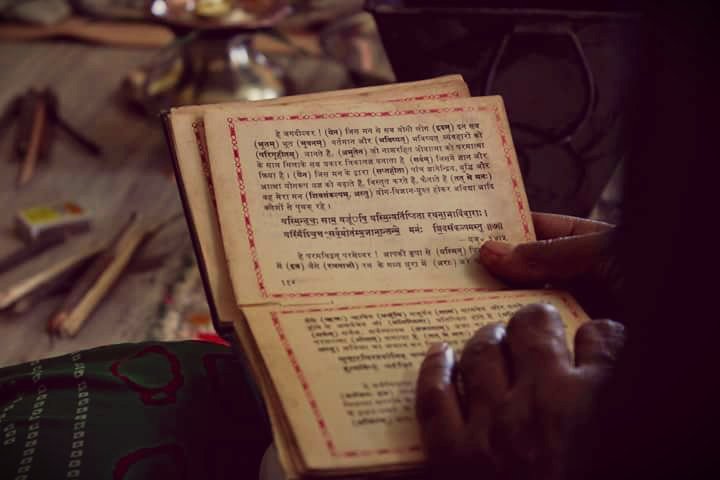

Therefore, according to the scriptures, Veda and Bhagavad Gita, the fundamental human problem is misplaced search for something in a place, where it is not available.
And therefore, the intelligent approach is to search for something in a place where it is available.
Now the question is:
Why do the human beings commit such a mistake?
And make the life a soup and go from struggle to struggle to struggle. Why?
The Vedas point out that these three basic needs are available within but hidden.
They are covered like the treasure that is covered under the ground or like the borewell water which is under the ground.
Struggling
One Swami who had an ashram, was struggling for water. Even an ordinary house, needs a lot of water. Imagine an ashram, where several members are there.
And that Swamiji dug all the ground, all over the ashram, to tap some source of water, he could not and he was struggling to get it from outside several places and 10 years he had to struggle sometime he gets, sometimes he does not.
This is a real incident. And one day he was standing outside waiting for someone and one government official from water department came with some hydrometer instrument, which can detect the ground water, it seems.
Then he said, why can’t we try and he asked the Swamiji to move a little bit standing on the gate and he kept the meter and found out that right underneath there is a huge and perennial source of water.
He has dug everywhere except that place.
So that Swamiji was jumping it seems like mokṣa.
Why was the struggle for 10 years. What he wanted he had but it was covered.
Similarly, the scriptures point out, we have the perennial borewell, which has got the permanent; what you call, source of these fundamental needs, viz., security, peace and happiness. But the problem is it is hidden by layers of covering.
And sometimes the water is so deep, we have different layers, one clay layer, some rubble layer, some other layer. Similarly, it is covered. And therefore, what is required to get these three.
What the Bhagavad Gita and Veda point out?
Remove the layers of covering and tap the borewell.


Tap the eternal spring of security, peace and happiness. May you tap from the eternal spring. And this process is called discovery. Discovery means what? Dissing the cover.
Dissing means what, removing the cover.
The Swamiji did not produce water, because water was already there. He only removed the covering which was between him and water. Now the next question is: what are the layers that cover these three, so that I can handle appropriately. If the cover is stone and rubbles, you have to use a different weapon, instrument; if it is wet clay, you have to use an appropriate instrument; depends upon the type of covering.
The scriptures point out that there are three layers covering the spring security, peace and happiness within us is covered by three layers. The grossest, subtle and the subtlest, the finest layer and what are those three layers.
They are known as:
- Malam: literally meaning impurity.
- No.2 vikṣepaḥ: means a extrovertedness and literally means disturbance; disturbance caused by extrovertedness. Outgoing tendency.
- And the third layer : avaraṇam, otherwise ajnanam, ignorance.
Malam, vikṣepaḥ and ajnanam.
Malam or impurity refers to varieties of mental problems, normally enumerated as the six fold impurities; six fold enemies, six fold obstacles to discover our inner joy. And those impurities are kamaḥ, krodhaḥ, lobhaḥ, mohaḥ, madaḥ, matsaryaḥ.
You would have heard kamaḥ, (desire), krodhaḥ, (Anger); lobhaḥ (Greed); mohaḥ (delusion); madaḥ (arrogance or vanity); matsaryaḥ (jealousy or competitiveness). These are the main six fold impurities in the mind. They make the first layer of obstacles in unearthing our inner joy.
Then the second layer of obstacle is, Vikṣepaḥ, the mental restlessness, mental wandering, mental extrovertedness is the second layer of obstacle, because of which I am not able to see; like when the water is turbulent, you cannot see the bottom of the river properly. If the water is muddied, you cannot see. That muddied water has got Malam (impurities).
The turbulent water has got Vikṣepaḥ (obstacle). When these two are there, you do not see what is down below. Similarly when the mind has got impurities and turbulence, you cannot recognize the truth behind.
And the third obstacle is called Ignorance; ignorance of the fact that I am the only source of these three. I am the spring of ananda (extreme happiness), the embodiment of security. I am full of, I have abundance of Shanti. This fact, I am ignorant. Ignorance is the third layer.
Therefore what is required; remove these three layers.
Three layers by appropriate: sadhana.


Sadhana means any discipline or exercise.
You may call it spiritual exercise, spiritual discipline, you have to practice. to remove these three obstacles.
And each discipline is called a yoga.
Yoga means that which unites the seeker with the destination.
Yoga means that which unites the seeker.
Me, with what?
The destination called security, peace and happiness. Like when the treasure-hunter uses different instruments, each one is like yoga because when obstacles are removed, who is united with whom?
The treasure-hunter is united with the treasure. So the hunter treasure-union is caused by this and that one which causes the union is called the Yoga.
The whole Ramayaṇa is compared to a spiritual journey. We have to use three different disciplines or yogas to recover the treasure; to claim my own treasure.
Three different disciplines or yoga to recover the treasure
And the three yogas prescribed in the scriptures.
Karma Yoga : to remove the first layer of obstacle.
The second yoga is called Upasana yoga to remove the second layer of obstacle.
The third one is called Jnana yoga to remove the third layer.
Karma Yogena mala nivrithi, you can understand these three Sanskrit sentences.
These three yogas do not bring anything but it connects me to my own treasure. It helps me claim my own wealth.
Like some people die, without writing proper will, and for the other survivor, to claim the property; it is his own property, their own property, but you have to go through so many procedures, and ultimately, what do you get. You do not get money, you have claimed the money which has been already yours. you are claiming your birthright
Thus three yogas are prescribed.
Karma Yoga is a life style consisting of proper action and proper attitude. What do you mean proper action? Any action which will primarily contribute to the reduction of kamaḥ, krodhaḥ, lobhaḥ, mohaḥ; instead of increasing them. Any action which will help in the reduction of the impurities is called proper action.
And proper attitude is the right attitude towards the action as well as the result of the action. A healthy attitude towards the action and its result which will help me grow through every experience. Healthy attitude is that which will help me.
The 3 Yoga mentioned in Bhagavad gita


Proper action plus proper attitude is Karma Yoga.
Karma Yoga removes the first layer of impurity.
Then the second yoga is upasana Yoga; which consists of different types of meditations, different forms of meditations will help in quietening the mind. The extrovert, turbulent, restless, outgoing, wandering, fidgety mind has to have some relaxation. A stress-free mind is the result of Upasana yoga.
Removal of impurity can be translated as attaining purity.
Upasana Yoga will lead to Vikṣepaḥ nivṛttiḥ. Removal of restlessness which can be positively presented as attaining the steadiness of the mind; instead of wandering, the mind is steady and calm.
And then comes the third Yoga called: Jnana yoga.
It consists of enquiry into my real nature.
Do I require Peace from outside or is my very nature is peaceful?
Or am I the ever secure Aatma (soul) ?
Do I need happiness from outside or can I tap it from myself?
So Jnana yoga consists of self-enquiry, Self-analysis, atma vicaraḥ.
And if a person goes through Karma Yoga, Upasana Yogaḥ and Jnana Yoga, all these three layers are removed.
And there is no option in these three, because we have all these three layers; in fact very very thick; thick layers we have got. And therefore, to help us ingoing through these three yoga, and also discover the inner security, peace and happiness, our scriptures guide us and these wonderful scriptures who guide us are called the Vedas.
What the purpose of Vedas?
The Vedas are these wonderful scriptures whose only aim is helping us to tap our own wealth.
Veda means source of knowledge, and these Vedas are revelations from the Source itself. Vedas have down to us through the Riṣhis. Rishis are the receiving centers; just as we have transmission station and receiving station.
Source: Swami Paramathananda’s Bhagavad Gita, Lectures in Chennai
References
Psychiatry and the Bhagavad Gita – Psychiatry in sacred texts – PubMed (nih.gov)
Psychotherapy in the Bhagavad Gita, the Hindu scriptural text – PubMed (nih.gov)
